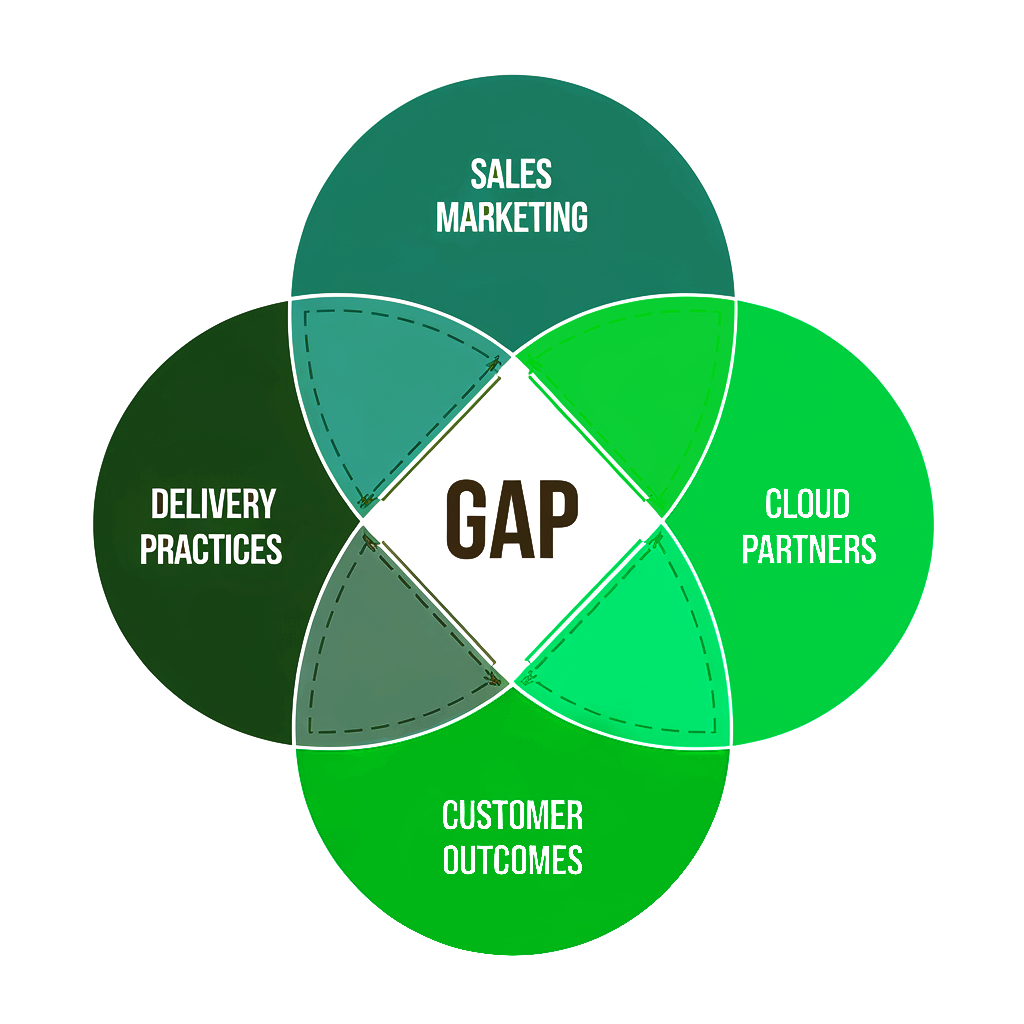Author: Doug Johnstone, Principal Consultant at Digital Pivot
Date: January 2025
Why Hoping for Demand to Return Is Becoming a Risky Strategy
A year ago, many professional services firms across New Zealand were in crisis.
Revenue had plummeted. Key projects were cancelled. Client budgets disappeared overnight. In response, most firms did what they had to: cut costs, freeze hiring, defer innovation. It was survival mode.
Now, twelve months on, a fragile optimism is starting to emerge. Some green shoots of opportunity are visible. Yet the much-anticipated economic rebound remains slow and uneven. The recession is proving more persistent than predicted. Confidence is still shaky. And while firms are cautiously looking for growth again, many are doing so without fully recognising the fundamental shift in market dynamics that has occurred beneath the surface.
Because the biggest threat facing IT and consulting providers today isn’t just slow demand, it’s the emergence of a Value Gap.

The Boiling Frog Syndrome: How Irrelevance Creeps Up on Firms
You’ve heard the analogy: if you put a frog in boiling water, it will jump out. But if the water heats gradually, it won’t notice until it’s too late. Professional services firms are experiencing a similar fate.
Margins are tighter. Pipelines feel sluggish. Win rates have declined. But it all seems explainable: the economy, budgets, staff turnover. So we rationalise. We make small adjustments. We double down on sales tactics or wait for funding cycles to improve.
But what if the real issue is something deeper?
The Value Gap is what happens when your offering no longer resonates with your buyers—when the world moves on, but your services, messaging, and commercial model stay still. It doesn’t scream at you. It creeps in. And by the time it shows up clearly on the bottom line, the damage is already done.
The New Reality: Economic, Technological, and Buyer Behaviour Shifts
The professional services landscape isn’t just changing, it has already changed.
- Economic volatility: Prolonged inflation, rising unemployment, and high interest rates have made buyers more risk-conscious and procurement cycles more drawn out.
- Technology disruption: The rise of generative AI is automating knowledge work, reshaping consulting delivery models, and challenging the value of manual, people-heavy services.
- AI Search and Zero Click Buying Journeys: B2B buyers are now finding answers and forming preferences, without ever speaking to a vendor. AI-powered search tools like ChatGPT, Perplexity, Gemini and Copilot are enabling “Zero Click Search,” where buyers get the insights they need instantly. This shortens the consideration phase and reduces the window for sales influence.
As a result, many firms are finding their traditional sales and marketing efforts are less effective than ever before. Buyers are making decisions earlier, engaging less, and expecting more often without the same human touchpoints.
This makes clinging to the status quo a risky strategy.

What Is the Value Gap?
The Value Gap is the space between:
- What your firm is offering, and
- What your target buyers currently value, need, and are actively searching for.
It is, fundamentally, a product-market fit problem, but it’s cloaked in the familiar symptoms of a sales slowdown. Leaders often mistake it for poor execution or market timing, when in fact the issue is strategic misalignment.
And in today’s fast-moving landscape, that misalignment can quietly erode your competitiveness.
Signs You May Be Facing a Value Gap
Not sure if this applies to you? Here are some early warning signs:
- Clients are questioning value more often, or asking for discounts
- Sales cycles are longer and involve more stakeholders
- Your pipeline is constantly full however you are not winning
- New service launches aren’t gaining traction
- Your messaging no longer sparks engagement or interest
- There’s a growing over-reliance on existing clients or legacy accounts
- Gaining new logos is significantly difficult or just not happening
- Sales and marketing teams are stuck in a cycle of blame
The Value Gap isn’t about lack of effort. It’s about lack of relevance.
Hope Is Not a Plan: Why Passive Growth Strategies Carry Risk
In uncertain times, it’s understandable to hold out hope that demand will return. That clients will begin buying again. That marketing performance will recover as the economy stabilises.
But in the current climate, waiting carries risk.
Market conditions have not simply paused, they’ve evolved. Buyer expectations have changed. Technology has changed. The way information is discovered and decisions are made has changed.
So while demand might eventually return, it may not return to your current offerings.
If your firm’s services are not directly aligned to high-priority buyer problems, packaged in a way that’s easy to find, trust, and buy, then simply weathering the storm is not enough. You risk being invisible in a Zero Click world.
Diagnosing the Value Gap: Three Strategic Questions
If you suspect your business is out of sync with the market, here are three tough questions to explore:
- Are we solving problems that buyers are actively prioritising and searching for right now? Not every problem is top-of-mind in a recession. Are you aligned with their budgeted priorities?
- Have our offers adapted to the new B2B buying journey shaped by AI Search and self-serve research? If you’re still relying on traditional lead capture and qualification, you’re missing where decisions are being made.
- Does our commercial messaging create insight and urgency, or just add to the noise? Buyers are overloaded. Are you telling them something new about their world, or just talking about your capabilities?
Pivoting Into Growth Markets: A Strategic Shift, Not Just a Tweak
Some firms are already making bold moves repositioning their service lines, rethinking how they engage the market, and reshaping their value propositions to meet new buyer needs.
Those that succeed don’t just bolt on a new service or launch a one-off campaign. They rethink the fit between their expertise and market demand. They find the signal in the noise. They get sharper, more specialised, more differentiated.
We’ve guided multiple firms through this process helping them rediscover where they win, reframe their value for modern buyers, and pivot into more sustainable, high-growth segments.
We won’t share the full playbook here, but we can say this: It starts by uncovering unmet demand, validating buyer pain, and aligning offers to that tension without overhauling your entire business.
Think of it as calibrating, not rebuilding.
Final Thoughts: Don’t Let the Water Boil
The Value Gap is real, and it’s already affecting firms that were top performers just a few years ago. It’s subtle. It’s gradual. But it’s deeply consequential.
In a world where AI is shortening buying cycles, where prospects find what they need without engaging vendors, and where economic recovery remains slow, the cost of staying still is increasing.
You don’t need to panic. But you do need to act.
This is your opportunity to pause, reassess, and ask: Are we still relevant to the buyers we want to serve? If not, it’s time to pivot, before the market makes that decision for you.
If you are seeing these symptoms in your business we should talk. Book a complimentary 30 min Discovery Call today.
For more information, contact us
Key steps to pivoting your offerings into growth markets:

